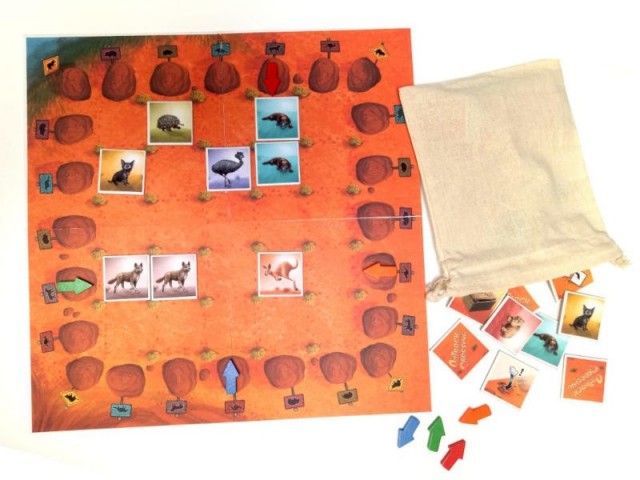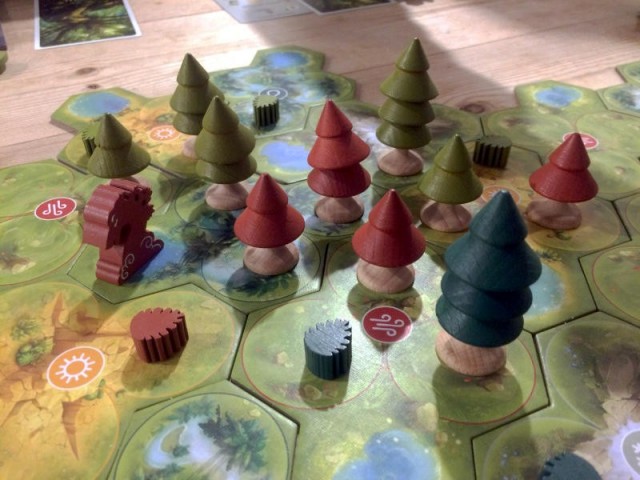"Troll!" came the shout from the battlements. "Where?!" we shouted back. "Southeast!" was the reply. Darn it. We didn't have any archers defending our fortress in that direction. It was fortunate that we still had time before we had to deal with the next wave of attackers. We were already in over our heads fending off orcs and goblins at the northern end of the bastion. Things were slowly becoming too chaotic. It was a real Castle Panic by Justin De Witt from Fireside Games.
Technically, this review is about the second edition big box of Castle Panic. Hence the release date of 2022 listed above. However, I've not yet delved into any of the promos or expansions that this massive package has on offer. They are things that I will slowly discover in the coming weeks and months and will review in due course. So let me focus on the base version of this cooperative tower defence game in this article.
No Panic at the Castle
As you would expect from the game's title, Castle Panic is all about controlling the chaos caused by waves upon waves of goblins, trolls, orcs and other things that are trying to breach the fortress's walls and destroy all six towers. I suppose, "The Six Towers" could also have been a fitting title for this comic-book-style illustrated family game. After all, I don't think there is much panic when you play this game. Mind you, "speed" is a word that I would associate with Castle Panic.
The rulebook is pretty straightforward and there aren't a lot of rules to learn. Everyone also gets a little player aid that explains the different phases of a turn. Additionally, two of the four corners of the central game board have the same order of play printed on them. The other two corners describe the special monsters' effects. So, in principle, it's all there right in front of you.
The only thing you have to look up in the rulebook is the hand limit and the number of cards a player can trade on their turn, which depend on the player count. If you do have the big box, you need to find the right monster tiles, which are a mix of attackers as well as special effects. That can take a while, because there are so many expansions in the box. Luckily, you only need to do this once, unless you decide to add any of the expansions into the mix.
So teaching the game is pretty quick and playing time is around the one-hour mark, making this a great game for the whole family. As I mentioned, the illustrations are comic-book-style and very vibrant, which makes the game appealing to younger players.
Cooperative Panic
Of course, every cooperative game faces the challenge of dealing with a dominant player who wants to tell everyone what they should do. However, given the amount of randomness in Castle Panic, there is very rarely one specific optimal move.
 Some of the ramparts have already been destroyed by attackers
Some of the ramparts have already been destroyed by attackers
What might seem like the best choice at the time, can easily turn out to be the worst decision players made during the game. Yes, trading the red archer with the next player, so that they can wound the troll that just appeared in the woods makes sense. The problem is that that troll might suddenly forge ahead an extra step during the next draw of monster tiles, some of which will cause unforeseeable havoc. Suddenly, the next player will sit on a completely useless card. All that everyone can do is take a call on how they think the game is going to go and play accordingly. Anyone who thinks they know how to win the game is going to be decisively proven wrong.
Yet, it is still very important that the team talks about the different options available. That's especially important because sometimes it's not easy to see what's happening at the opposite end of the board. However, it's the active player who will make the final decision. If they want to use the amazingly powerful barbarian now to kill a troll, then that's their choice. It might be the perfect play or might turn out to be disastrous. Everyone will just have to wait and see.
Controlling the Luck
Despite the amount of randomness in Castle Panic, players do have some control over their cards. There is the option of discarding a card and taking a new one, which has two potential benefits: the drawn card might solve an immediate problem or help the next player, but more importantly, the team is cycling through the shared deck of cards. That means, powerful cards played in previous rounds could come back out, once the draw deck runs out and the discard is shuffled into a new one. The more you play, the better you will know the deck as well.
Additionally, the active player can trade one or two cards, depending on player count, with the team. That way an immediate threat could potentially be neutralised or a player can deal with an attacker that's currently not in range, but will be on a subsequent turn, if the monster tiles don't have other plans, of course.
 Two brick cards are useless to defend against attackers
Two brick cards are useless to defend against attackers
There is also value in keeping an eye on what tiles have already come out, so that the team knows what's left. I know I haven't mentioned it yet, but the aim of the game is to have one tower still standing after the last attacker has been killed. There is a stack of monster tiles, two of which are drawn after every player's turn. Once the stack is empty, all monsters remaining on the board have to be destroyed also. So it is possible to work out what tiles are still left. That means that if you know that there are no boulders left, you can adjust your strategy accordingly. I wouldn't encourage anyone to spend ages working out what tiles are yet to come out, but knowing the distribution of some of the tiles is definitely helpful.
Fun at the Fortress
Overall, Castle Panic is a really fun game for players of a wide range of ages and experience with modern board games. It looks lovely on the table, because there are cardboard standees for the six walls and six towers that you put into the centre of the thick game board. The attackers are cardboard tiles that you lie flat, which makes sense given how the game works. Monster standees just wouldn't do the job.
I can't wait to try some of the expansions, but I also know that the base game alone will keep you busy for quite some time to come. It certainly won't get boring after a handful of plays, because the randomness of what monster tiles come out and what cards players draw will make every game feel very different. So while after one game you will be high-fiving each other for having so efficiently defended the castle, the next game will be an absolute disaster where you were overwhelmed by the attackers.
At the same time though, most games will go right to the end. You will have one or two towers standing and maybe three attackers still forcing their way forward. If you get the right cards at the right time, you can still make it, but if luck isn't on your side, you will be defeated. Either way, you will have had around an hour's worth of fun.
So give Castle Panic a go and see for yourself. If you like cooperative tower defence games, I don't think you will be disappointed.
 Games
Games How to resolve AdBlock issue?
How to resolve AdBlock issue? 
















